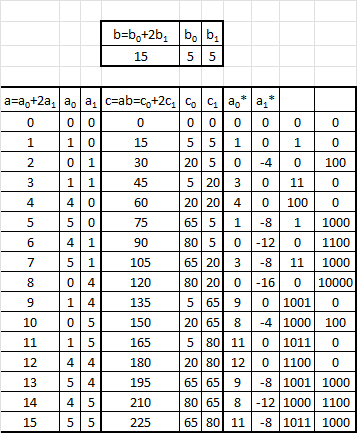The Cayley-Dickson construction generates higher-dimensional hyper complex numbers from lower-dimensional ones, producing algebras of dimension $2^n$.
I want to generate an algebra of dimension $2^{-1}$, but there is no CD construction to go from higher to lower dimensions.
The question is: how can hypercomplex numbers with dimension $2^{-1}$ be defined?
Here’s what I tried:
Hypercomplex numbers with dimension $D$ are, geometrically, points in a $D$ dimensional space. According to the CD construction, a number $c \in \mathbb{R}$ (with dimension $D=1$) should be expressible as a pair of numbers $(c_0,c_1)$ from the $2^{-1}$ dimensional space.
So as $2^{-1}$ dimensional space, I pick the set of real numbers, which when written in base $b$, have all zeros in odd-placed digits.
This set of numbers creates a fractal, which, when scaled by $b^2$, forms $b$ copies of the original set. According to the Hausdorff dimension, they have dimension $D=\frac{\log(b)}{\log(b^2)}=\frac{1}{2}$.
I pick the binary base ($b=2$), because it is convenient to do numerical experiments.
Any number $n \in \mathbb{R}$ can be decomposed into its even and odd digits $n_0,n_1 \in \mathbb{R}^\frac{1}{2}$ with a binary $AND$ operation:
$n_0=n AND ...10101010101.0101...$ $n_1=n AND ...01010101010.1010...=(\frac{n}{2}) AND ...10101010101.0101...$
To recover the real number:
$n=(n_0,n_1)=n_0+2n_1$
The product rule in Cayley-Dickson construction is, for $ a \cdot b = c$, ($a, b, c \in \mathbb{R}),$
$$(a_0, a_1) \cdot (b_0, b_1) =(a_0 b_0−b_1 a_1^*, a_0^* b_1+b_0 a_1) = (c_0, c_1)$$
(wikipedia states this next version, but I use the former, as in most books) $$\require{cancel}\cancel{(a_0, a_1) \cdot (b_0, b_1) = (a_0 b_0 - b_1^* a_1, b_1 a_0 + a_1 b_0^*) = (c_0, c_1) }$$
then:
$c_0=a_0 b_0−b_1 a_1^*$
$c_1=a_0^* b_1+b_0 a_1$
The unknown concept is the definition of the conjugates $a_0^*, a_1^*$, so I numerically calculate the conjugates from the former equations:
$a_1^*=\frac{a_0 b_0−c_0}{b_1} $
$a_0^*=\frac{c_1-b_0 a_1}{b_1}$
But this produces inconsistent results, for example, when multiplying $a= [0,1,...,15]$ by $b=15$, the conjugate for $a_0=1$ may be $a_0^*=1,3,9,11...$
so this doesn't works. Can you give a hint, a different way to define $\mathbb{R}^\frac{1}{2}$, or fix my attempt?
The conjugate of $n_i$ should produce the modulus of $n_i$, by $|n|=n_i n_i^*$, but I have no clue about what is the meaning of length in $\mathbb{R}^\frac{1}{2}$. Does the Pythagorean theorem extend to $\mathbb{R}^\frac{1}{2}$? How?

